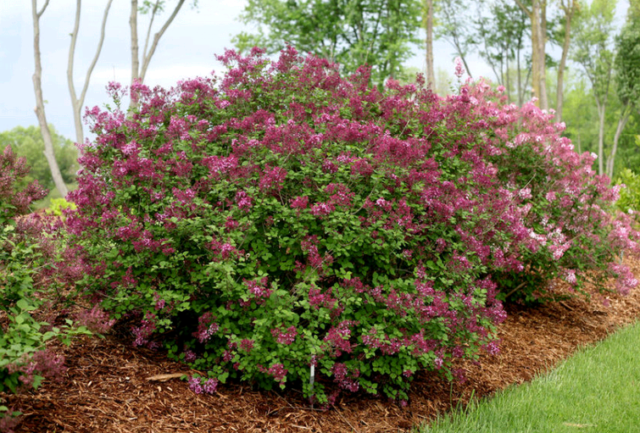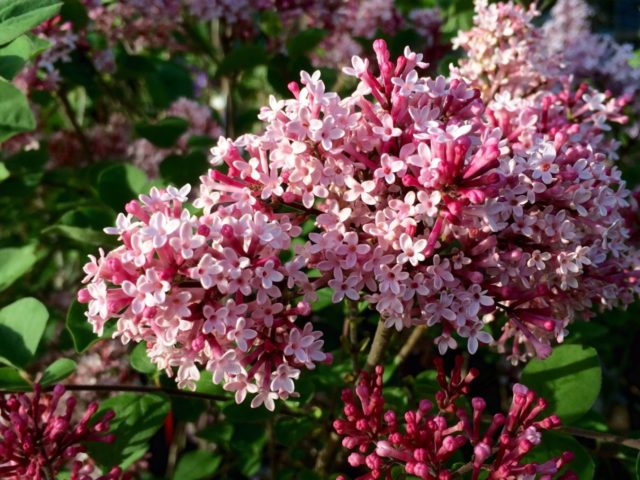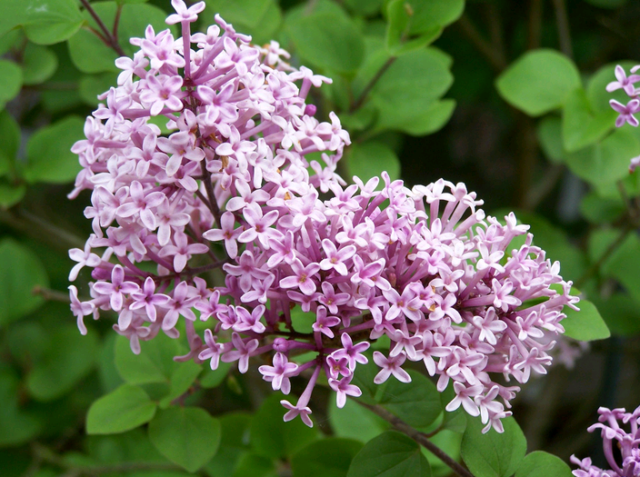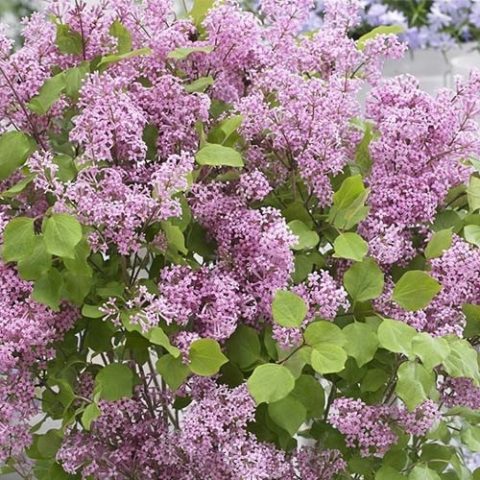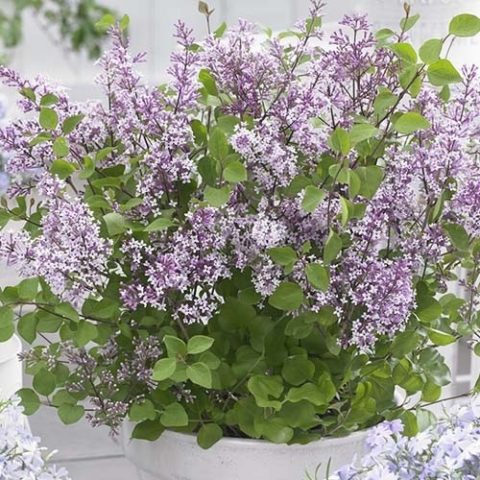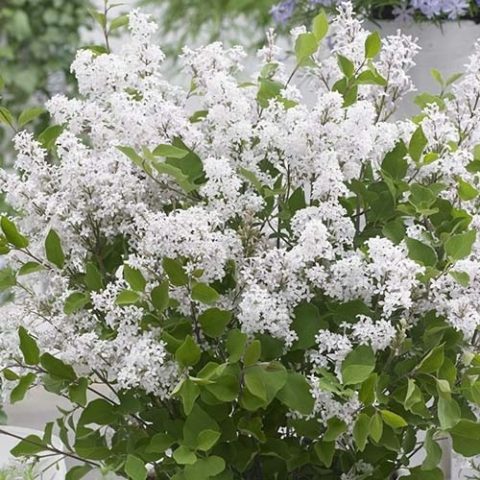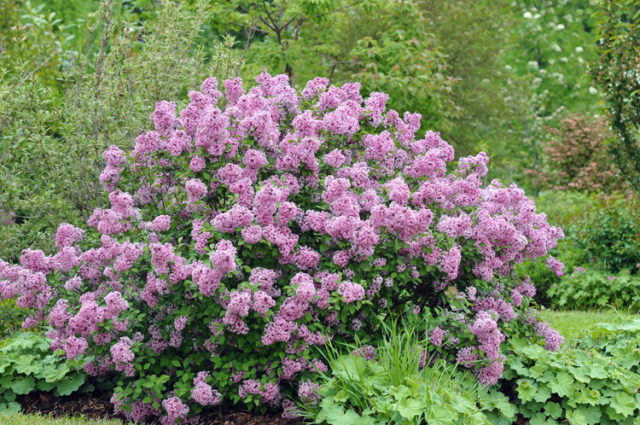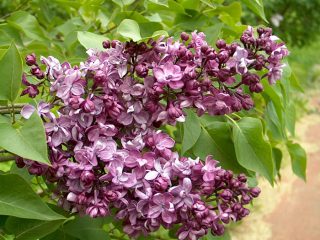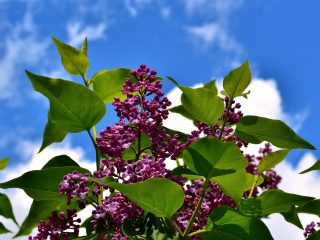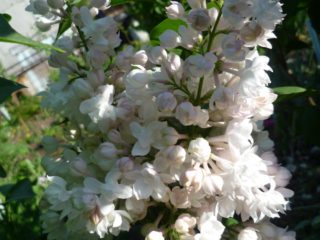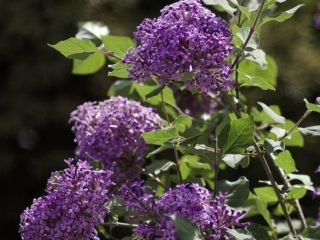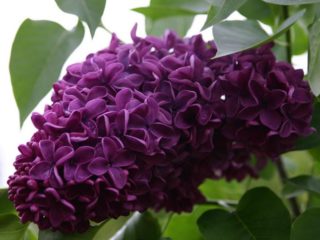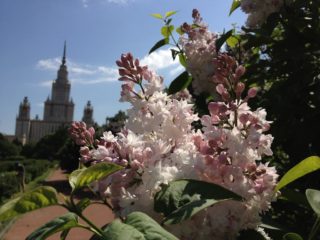Content
It is difficult to find a person who would never enjoy lilac blossoms in their life. In large and small cities, in villages and hamlets in the spring, these plants represent the final entry of spring into its rights. Meyer lilac does not look entirely traditional, since it is a miniature, even dwarf species. But this is also its advantage, since it is truly universal in application.
Detailed description of the species
Meyer's lilac was discovered for the first time in China, but among cultivated plantings. This type of lilac has not yet been discovered in the wild. Its main feature is its small size. The shrub reaches a maximum height of 1.5 m.
The article will present not only a description of the Meyer lilac, but also numerous photographs that will help to get an idea of its appearance.
With the overall comparative compactness of the crown shape in width, it can grow significantly and also reach 1.5 m. That is why lilacs of this species serve excellently both as a tapeworm on the lawn and in a hedge row. But the shrub of this variety grows and develops very slowly; annual growth can be only about 10 cm per year, and for some varieties even less.
Young branches of the bush have a dark brown tint. With age, the color lightens a little and becomes gray-brown. The bark of adult branches is covered with numerous microscopic cracks.
Quite small in size, the opposite leaves are elliptical in shape with a wedge-shaped base. They do not exceed 4-5 cm in length and 2.5-3 cm in width. They have a rich green tint on top and are lighter below. Slight pubescence can be seen along the edges of the two lower veins. The leaves have jagged edges.
Meyer lilac blooms from about the end of May to mid-June, simultaneously with the late varieties of common lilac. The inflorescences look like erect panicles up to 10 cm long, which bloom from several uppermost buds at the ends of the shoots. The flowers are very small, funnel-shaped with a light rim on the underside of the corolla. The aroma is at times strong, pleasant and refined.
At the end of summer, when the heat subsides, the Meyer lilac may well bloom again, although not as abundantly as in the spring. Flowers, depending on the variety, can be white, red, pink, purple and lilac.
Unlike common lilac? this species is able to bloom much earlier, literally in the second or third year of life. Incredibly, tiny bushes, about 30 cm high, may already be covered with buds.
Meyer's lilac or Syringa Meyeri (as this species is called in Latin) is characterized by the fact that, unlike other varieties, it does not form root shoots at all. But it is capable of producing many shoots from the base of the bush, growing in breadth.
This species can be used for row planting in hedges, in a group of other beautiful flowering shrubs, and, of course, as a tapeworm.
In the description of Meyer's lilac, one cannot fail to mention its features:
- amazing frost resistance - plants can withstand air temperatures down to - 30 ° C;
- smoke and gas resistance, which allows such varieties to be planted in urban environments;
- heat resistance.
Popular varieties of Meyer lilac
Breeders managed to obtain many different varieties of Meyer lilac. And although the dwarf variety Palibin is considered the most popular, other varieties deserve no less attention.
Red Pixie
In the description of the Meyer Red Pixie lilac, one cannot help but notice that, compared to other varieties, it is quite large in size, which is clearly visible in the photo.
The bushes can reach a height of 170 cm. And the inflorescences that form on the bushes are quite large, up to 12-16 cm. The inflorescences are characterized by a red or bright purple hue of flowers, which is relatively rare for lilacs. True, over time, the color of the Meyer Red Pixie lilac flowers becomes lighter, more like pink, as in the photo.
The bushes of this variety grow 120 cm in width.They have oval leaves with a barely noticeable protruding tip, which have a glossy surface. The variety can be called remontant, since at the end of July and in August a second wave of flowering can be expected from it. The flowers have a persistent pleasant aroma and will decorate any area.
Josee
This is a hybrid variety, which was developed using three types of lilac: Meyer, small-leaved and open. The bushes reach 150 cm both in height and width, so they look very impressive. The variety also belongs to the remontant variety. It traditionally blooms for the first time at the end of May, when the entire bush is covered with lavender-pink inflorescences. If the level of illumination, as well as soil moisture, allows, then at the end of summer the Meyer Jose lilac will bloom for the second time. The intensity of re-blooming also depends on the timely removal of all wilted inflorescences.
This variety grows extremely slowly, making it ideal for small borders and mixed borders. Tubular flowers emit an unforgettable aroma, especially noticeable at night.
Tinkerbelle
Another very attractive variety of Meyer lilac. It belongs to the most dwarf varieties, not exceeding 1-1.2 m in height. But in the horizontal plane the bushes can spread 1.5 m.
Unopened buds appearing at the very end of spring have a bright cherry color. And after blooming they become soft pink and very fragrant. With such an attractive appearance, the Meyer lilac variety Tinkerbell is not at all particularly demanding in terms of growing conditions. Can tolerate poor soils, moderate watering, partial shade and other average conditions.Under favorable circumstances, it is also capable of re-blooming at the end of summer.
Flowerfesta Pink
One of the representatives of the new series of lilac varieties Meyerflower Festa (flower festa), under the designation pink, which means “pink” in English. This series was launched literally in recent years. It has more abundant and longer flowering than other varieties. The flowering period begins in May and continues in June. Repeated flowering can last from July until the onset of the first frost.
The plants are distinguished by one of the most compact forms of bushes, reaching one meter in width and a maximum height of 120 cm. This particular variety has pink flowers. The length of the inflorescences is quite standard for this type of lilac - about 10 cm. But the inflorescences themselves are very lush and are formed on the bushes in large quantities.
Flowerfesta Purple
Another variety from the Flowerfest series, which has flowers of a lilac or violet hue.
Flowerfesta White
Mayer's lilac variety from the above-described modern hybrid series with white flowers.
Bloomerang Purple
An interesting hybrid variety was obtained by crossing four varieties of lilac. The dimensions of the bush are quite typical for lilac of the variety described, reaching 150 cm in both width and height.
The inflorescences have an attractive bright purple hue, which may fade slightly over time. Like all other varieties, it is remontant. Moreover, if all the drying inflorescences are specially removed in time, then the second flowering in August may not be inferior in brightness and abundance to the first one, which occurred in May-June.
A wonderful aroma complements the overall impression of the flowering bush, which can last until the first frost.
Lillifee
This variety is characterized by very abundant flowering in May. The bushes reach a height of 120-130 cm and spread up to 150 cm in width. In autumn, the foliage changes its green color to an attractive orange-red hue. Unopened buds are dark purple in color. While the flowers are distinguished by a beautiful lilac-violet color. The aroma from flowering is subtle and light.
Benefits of Growing Dwarf Meyer Lilacs
It is not for nothing that Meyer’s dwarf lilac attracts many amateur gardeners. After all, its compact bushes can decorate even the smallest area around the house. They are quite suitable for planting in flowerpots or containers and even in balcony boxes. No wonder people call it a balcony. Meyer's lilac can also be called a border plant, since due to its small height it can well serve to create green flowering borders.
Lilac bushes of this variety are able to bloom at a very young age, much earlier than traditional varieties, and this cannot but attract owners of their personal plots.
But this lilac can also be used for large landscape areas. It will fit perfectly into flower beds, mixborders, and decorate large rockeries and hedges.
And the biggest advantage of this variety is its repeat flowering in late summer. After all, the aroma of blooming lilacs in August can surprise anyone.
How does Meyer lilac propagate?
Meyer lilac can be propagated using all standard methods:
- seeds;
- vaccinations;
- cuttings;
- layering.
The seed method is too labor-intensive.In addition, most hybrid varieties with this method of propagation will not retain their original properties.
Lilacs of this species are propagated by grafting in early spring or winter, when all the buds are dormant. You can graft cuttings onto ordinary or Hungarian lilac, as well as onto privet. The formation of plants often occurs in the form of a standard tree.
This species is best propagated by cuttings during flowering. At the same time, an annual shoot is cut out from the middle of the bush and planted in a light mixture of sand and vermiculite.
Meyer lilac is propagated by root layering, as a rule, in the fall, at a time when the intensity of sap flow in plants decreases.
Rules for planting Meyer lilacs
Most often, varietal Mayer lilacs are purchased at garden centers in containers with a closed root system. This ensures ease of planting and guarantees its 100% survival rate.
The most favorable period for planting lilacs in a permanent place is from mid-August to the first half of September. If the seedling was purchased in the spring, then it is better to bury it in a shady place until the end of summer.
When choosing a place to plant shrubs, you should be guided solely by your aesthetic requirements. The bushes are very unpretentious and can take root almost anywhere on the site, but for good and abundant flowering it is advisable to choose a sunny place. Soils can be anything from slightly acidic to slightly alkaline. The only thing that no type of lilac can tolerate is stagnant waterlogging in the root zone.Therefore, when planting in lowlands or marshy areas, it is necessary to use a decent layer of drainage.
The size of the hole should approximately correspond to the size of the seedling's root system. If the soils are completely depleted, then it is advisable to add to the planting hole:
- 1 tbsp. l. phosphate fertilizers;
- a bucket of compost or humus;
- a glass of wood ash.
The lilac seedling is pulled out of the container; if necessary, old and diseased roots are removed or cut to a living place. Place the plant in the prepared hole and gradually cover it with earth. After which all shoots are cut into 2 buds.
The soil around the seedling is slightly compacted, sprinkled with plenty of water and covered with a layer of organic mulch about 6-7 cm thick.
Caring for Meyer lilacs
Meyer lilac is a heat-resistant and drought-resistant shrub, so caring for it will not cause much trouble. Bushes need a large amount of water only during the flowering period. At other times, atmospheric moisture will be enough for plants. Of course, if the summer was particularly hot and dry, then in order to re-bloom in the fall, the bushes need additional watering. Also, freshly planted bushes need regular watering (once a month) before the onset of stable frosts.
When applying fertilizers during planting in the first two years, lilacs do not need additional feeding. Next, ammonium nitrate can be applied to the plants under the snow in early spring and watered with phosphorus-potassium fertilizers in August every two years.
Lilac bushes of this species are very small in size and have a shallow root system, which makes it easy to grow in containers. But this same fact can be detrimental to the plant in the event of a frosty and snowless winter. Although Meyer lilac has good winter hardiness, in the first years after planting it is advisable to cover the entire root zone generously with organic matter and in winter make sure that the bushes are covered as much as possible with snow.
Sanitary pruning of lilacs should be carried out throughout the season, removing dry, diseased or damaged branches. Anti-aging pruning is usually done in the fall, cutting out no more than 1-2 old shoots per year.
To give the bushes a beautiful shape, you can slightly shorten the shoots in early spring before the buds awaken and immediately after flowering. Lilacs respond well to pruning. But you shouldn’t be too zealous with annual shoots, since flowering occurs mainly on them and on last year’s growths. And, of course, you cannot do without constant formative pruning when growing Meyer lilacs on a trunk.
Loosening the soil in the root zone and removing weeds must be carried out with great care due to the shallow location of the roots. It is better to cover the entire root zone with a generous layer of mulch, which will retain moisture, prevent weeds from germinating and provide additional nutrition.
Diseases and pests
This type of lilac has good resistance to many diseases and pests. In conditions of too humid summer it can be affected by powdery mildew, which can be successfully combated by spraying with any fungicide.
When pests are detected (bud mite, lilac leaf beetle, leaf miner), the lilac is treated with insecticides.
Sometimes it is affected by viruses, which are useless to fight. You just need to monitor the health of the planting material and provide the plant with proper care.
Conclusion
Meyer lilac is a very decorative, versatile and at the same time unpretentious shrub. It can be grown almost anywhere, and repeated flowering in early autumn will surprise and delight with its unexpectedness.
Reviews
Reviews of Meyer lilac once again testify to the unpretentiousness and charm of this plant.
